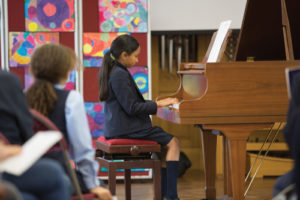A survey of 297 primary school teachers reveals the need for policy makers to listen to teachers, as the majority of school leaders fear that exam pressure is leading to an increase in mental health issues amongst the UK’s youngest students.
A recent survey by primary resource provider PlanBee has found that 91% of UK primary school teachers believe that primary-level SATs results matter most to the government, and least to parents and children.
The question, ‘Who do SATs results matter to more, in your opinion?’ was answered by 297 KS1 primary teachers between 16 May and 21 May, in the midst of 2018 SATs test dates.
It comes after thousands of parents across the country considered a SATs boycott and concerns have been raised by the National Education Union (NEU) over the government’s new literacy and numeracy tests for four year olds, who voted to explore ways of disrupting the pilots this April.
The survey results have shown:
• 91% of teachers believe that primary SATs results matter most to the government.
• Just 8% of teachers feel that primary SATs results matter to schools.
• 0% of 297 teachers believe that primary SATs results matter to children involved.
PlanBee’s survey validates the remarks of Ofsted’s chief inspector Amanda Spielman, who claimed in 2017 that schools’ focus on testing is damaging to education. She admitted that Ofsted were partly to blame, claiming that testing causes headteachers to “focus on the performance of the school and lose sight of the pupil”.
Former primary school teacher and current Head of Communications at PlanBee, Oli Ryan said, “The results of the survey are striking. Once again, it shows that policy makers need to listen to teachers. Too much pressure is placed on children to achieve during SATs, and it’s clear from this survey that they are the ones who benefit least from them.
“It’s evident that stress and anxiety levels among children is rising, and that pressure to achieve during SATs can contribute to this. A much greater emphasis on promoting pupil well-being in schools is needed.
“Teachers can’t affect this fundamental change on their own. A unified strategy for prioritising children’s well-being in schools needs to come from the DfE, the Standards & Testing Agency and Ofsted, too. As the House of Commons Education and Health Committees recently reported, the government needs to do more. A greater emphasis on giving children life skills for their own well-being will help them achieve academically, too.”
Research by YouGov for campaign group More Than A Score looked at the impact of SATs on the well-being of children and their education.
It polled 596 parents of children aged seven to 14 to understand the pressures children face as a result of SATs. 63% of those surveyed said that their children face too much exam pressure, and only 13% agreed with SATs in their current form.
In an exclusive statement, More Than A Score spokesperson, Madeleine Holt said: “Our polling confirms what parents have been telling us for years: SATs are damaging and pointless. Now we see even six and seven-year-olds worrying about tests. Surely learning is about more than getting a perfect score? Children need a broad and rich curriculum that encourages them to be excited about learning, not terrified of failing at such a young age.”
“With the status of a school and teachers’ pay so closely linked to SATs results, it’s no wonder so many are teaching to the test. The SATs regime is inhibiting children’s learning as SATs revision begins to dominate the timetable. Our primary school children in England are already some of the most tested in the world. This results in stress and anxiety in children, narrows the curriculum and distracts teachers from doing their job: teaching.
“That’s why we are calling for the government to scrap SATs, and commission an independent and expert review to produce recommendations for primary school assessments that are fit or purpose.”



 This journey of broad discovery essentially starts at primary and indeed pre-primary level and provides all children with the opportunity to seek out and explore areas of interest and to develop talent which provide many with a lifelong love of learning. Over the years I have spoken to many parents whose main requirement, when considering the options for their children, is to ensure their children are happy. Happiness and thus mental health are of key importance in a world of increased pressure and expectations. Children supported and nurtured and indeed loved within their school will automatically have a head start and hopefully will develop a hunger for knowledge. Of course the breadth of study and the balance of the curriculum is also key and provides the option for all to explore their individual burgeoning interests. All children develop academically at a different pace. On many occasions I have had to reassure anxious parents that their child is not a failure because they are struggling with their spellings or their fractions. These are just moments in time in the life of a young person and should not be the basis of perceived success nor failure.
This journey of broad discovery essentially starts at primary and indeed pre-primary level and provides all children with the opportunity to seek out and explore areas of interest and to develop talent which provide many with a lifelong love of learning. Over the years I have spoken to many parents whose main requirement, when considering the options for their children, is to ensure their children are happy. Happiness and thus mental health are of key importance in a world of increased pressure and expectations. Children supported and nurtured and indeed loved within their school will automatically have a head start and hopefully will develop a hunger for knowledge. Of course the breadth of study and the balance of the curriculum is also key and provides the option for all to explore their individual burgeoning interests. All children develop academically at a different pace. On many occasions I have had to reassure anxious parents that their child is not a failure because they are struggling with their spellings or their fractions. These are just moments in time in the life of a young person and should not be the basis of perceived success nor failure. Confidence is key together with a large dose of resilience. So your child isn’t going to win a Spelling Bee! But watch them play their musical instrument with pride and courage or hear them sing in front of an admiring audience. Look at their artwork and wonder at their developing sensitivity. Stand back in awe at their prowess on the hockey field and feel proud at their selfless teamwork and support for others. Marvel at their enthusiasm for their castle project in history or their ability to recite verse in French or Spanish. And admire them on the stage in the school production as a child you barely recognise as the one who you take home every day from school!
Confidence is key together with a large dose of resilience. So your child isn’t going to win a Spelling Bee! But watch them play their musical instrument with pride and courage or hear them sing in front of an admiring audience. Look at their artwork and wonder at their developing sensitivity. Stand back in awe at their prowess on the hockey field and feel proud at their selfless teamwork and support for others. Marvel at their enthusiasm for their castle project in history or their ability to recite verse in French or Spanish. And admire them on the stage in the school production as a child you barely recognise as the one who you take home every day from school! gether
gether










